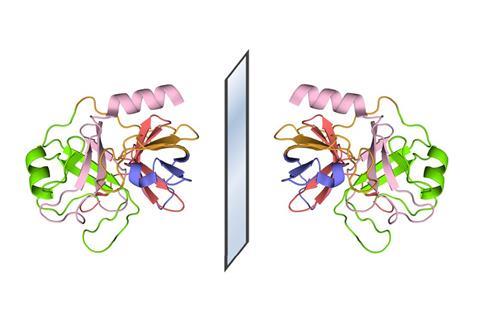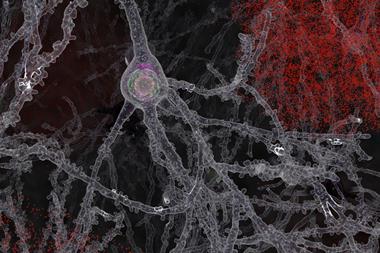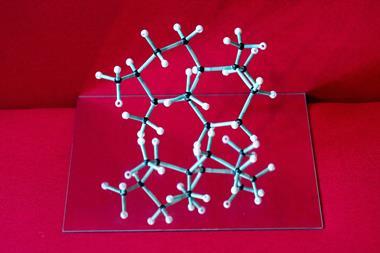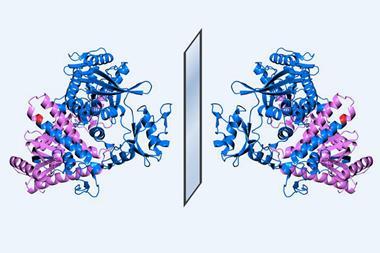By synthesising a mirror-image version of protein-digesting enzyme trypsin, scientists in China have pioneered a method of sequencing D-proteins. The strategy could aid the development of promising mirror-image peptide and protein therapeutics.
Where natural peptides and proteins exhibit L-chirality, their mirror-image counterparts show D-chirality and have been investigated as potentially useful drugs. Because these molecules aren’t recognised by natural enzymes, they tend to be remarkably biostable and are predicted to avoid triggering inflammatory responses. However, this also means that traditional methods of sequencing, that rely on digestion by site-specific enzymes, won’t work for D-proteins.

To address this, Ting Zhu, a life scientist at Westlake University, China, and Guanwei Zhang, a graduate student in his lab, used solid-phase peptide synthesis and native chemical ligation to create a mirror image trypsin capable of digesting D-peptide bonds. By analysing the peptide fragments this produces, Zhu and Zhang were able to sequence mirror-image proteins, including a ribosomal protein and a DNA polymerase.
‘The mirror-image trypsin digestion and D-protein sequencing method may become a useful tool for validating mirror-image ribosome assembly, as well as the D-protein products of mirror-image translation,’ explains Zhu. ‘Combined with de novo sequencing, it may also facilitate the discovery of biostable D-peptide drugs.’
According to Michael Kay, a biochemist at the University of Utah, US, recent growth in the mirror image field has highlighted the need for appropriate analytical techniques. ‘As synthesised proteins get larger with advances in chemical protein synthesis, it becomes more challenging to evaluate the quality of these synthesised proteins – due to their large masses and broad peaks in chromatography,’ he explains. ‘Until now, the field lacked one of key analytical tools that protein chemists take for granted.’
‘Having an enzyme that can digest the protein and show that it has the correct structure for the regulatory authorities, that’s very important,’ explains Stephen Kent, a pioneer of mirror-image protein synthesis based at the University of Chicago, US. ‘My guess as to one important near-term impact of mirror-image molecular biology is that it will enable the rapid – by pharmaceutical development standards – development of mirror-image, D-protein molecules as human therapeutics.’
Zhu has high hopes for the future of mirror-image proteins. ‘After the realisation of mirror-image genetic replication, transcription, and reverse transcription, the next step in establishing the mirror-image central dogma of molecular biology is to realise mirror-image translation by synthesising a mirror-image ribosome,’ he says.
Kent explains just how ambitious a goal building a mirror-image ribosome is, noting that it is ‘beyond Mount Everest in terms of chemistry and molecular biology’. But when asked how close the field may be to that lofty goal, he suggests that it could be achieved sooner than one might think: ‘My guess is that they’re getting pretty darn close.’
References
G Zhang and T F Zhu, Nat. Chem., 2024, DOI: 10.1038/s41557-023-01411-x

















No comments yet